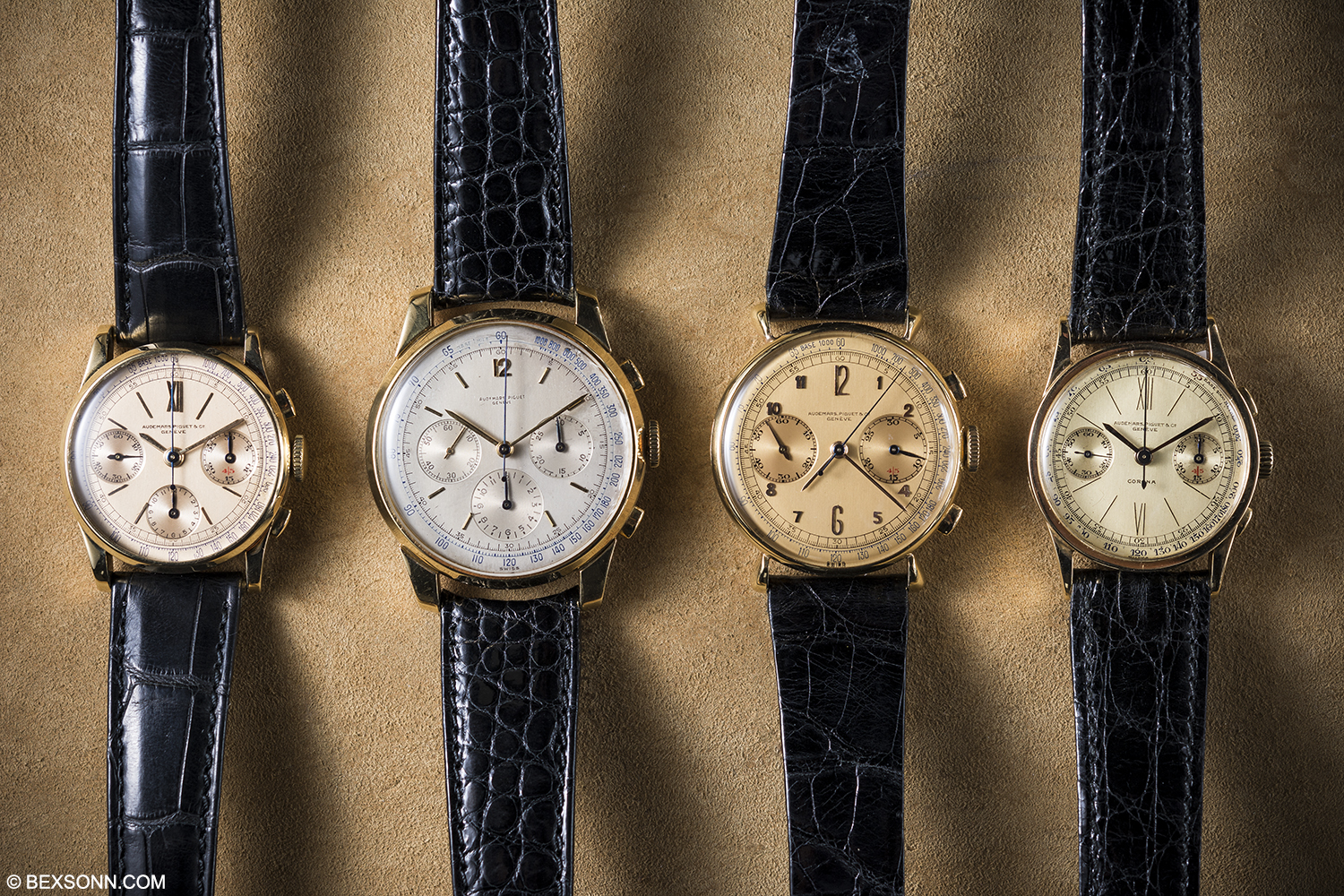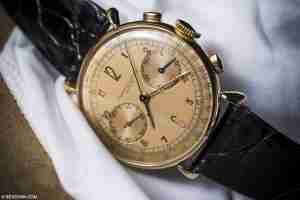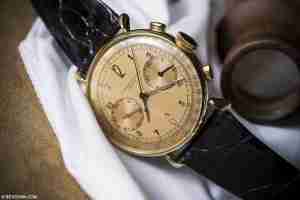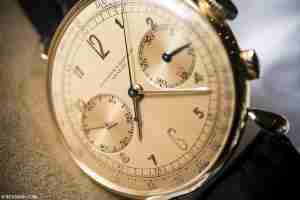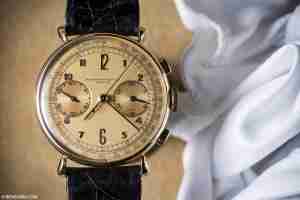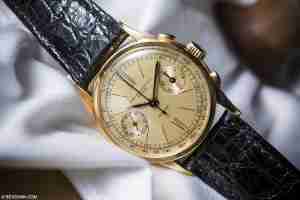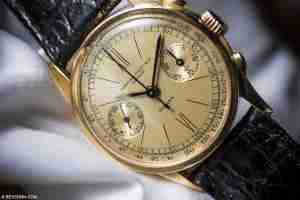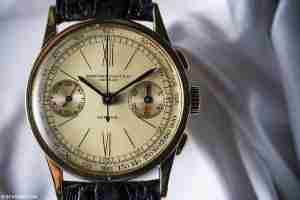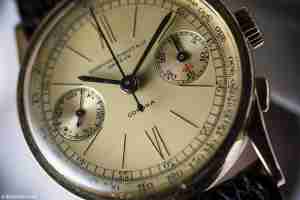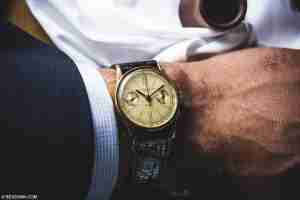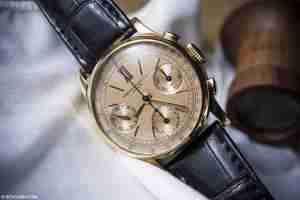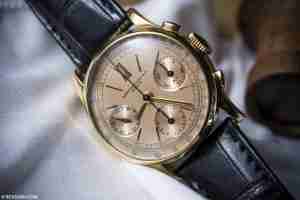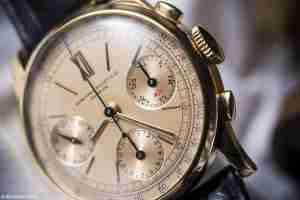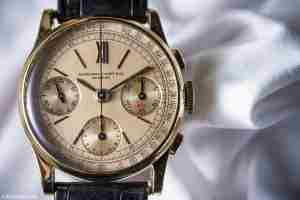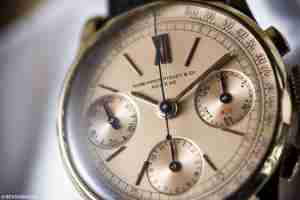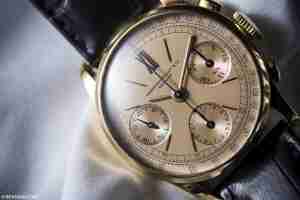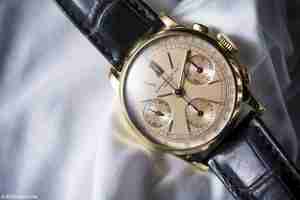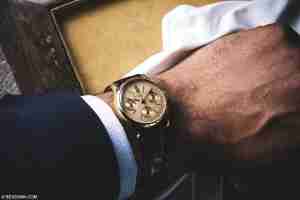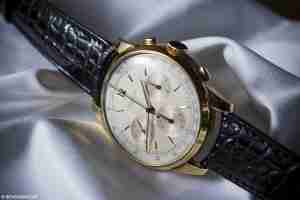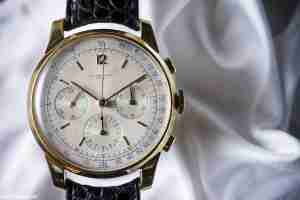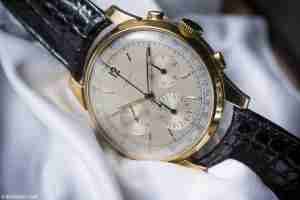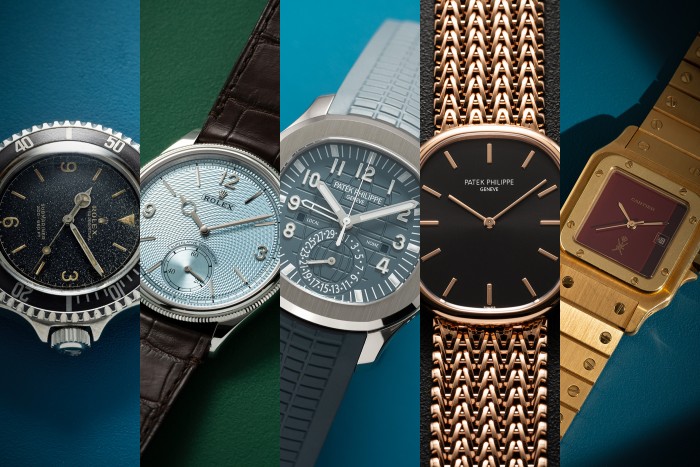Marcus’ Vintage Audemars Piguet Chronograph Collection: For those who are unaware I have a bit of a thing for chronographs and while some may consider them to be useless, I see them as works of art that, for me, still play a big part in my daily meanderings. It would also appear that Marcus Margulies of Marcus Watches, London Bond Street, also has a thing for chronographs but more interestingly vintage Audemars Piguet chronographs. A couple of months back we decided to explore some of his pieces and he has quite a collection. You see, Marcus is actually quite well known for his love of vintage AP timepieces but admittedly there are more than vintage AP’s in the depths of the Marcus vault but we’ll leave that to another time.
If you follow us on Instagram you’d have seen that we’ve posted images of some of his illustrious and rare AP collection, of which not only consist of chronographs. While many collectors are drawn by the allure of vintage Patek Philippes, Marcus has had a keen eye for vintage AP’s for some time and it is quite interesting as to how this came about. The Margulies family have had a long relationship with Audemars Piguet and that was even before Marcus, himself, joined the company in 1962. After some very successful years with Audemars Piguet, Marcus decided it was time to start their own vintage AP collection. This decision was largely based on their respect for Patek Philippe who, over the years, have made many great timepieces and produced comparatively large quantities of highly priced watches. They had assembled the greatest collection of watches in the world as a tribute to their long history and, at the time Marcus couldn’t understand why Audemars Piguet was not doing the same. Audemars Piguet have not achieved the same level as success in the complicated watches but Marcus feels that their designs are the very best that watches of that period have to offer. And so, his current vast collection of vintage AP’s is nothing short of stunning and this is just a minute piece of it, though Marcus’ only real surprise is that he’s been allowed to amass such a collection, both by the factory and collectors who do not yet understand the scarcity of the product on the market.
VALJOUX 13”’ VZ
The chronographs systems used in all the pieces below, were actually invented in 1845 by Adolf Nicole (in England) and Henri Féréol Piguet (in Vallée de Joux, Switzerland – hence the name Valjoux). We talk a lot here on bexsonn about chronographs but have never really looked at the two systems that actually exist. The first is a monopusher. By pressing the pusher once, the chronograph starts. Press it a second time it stops and a third, it resets. Then you have the second, and more commonly used, system that has two pushers, one for start and stop, and a second to reset the hands. Then there are variations on outer scale and sub dial configurations, i.e. two sub dials or 3 and the possible scales: a tachymeter (to measure speed), a telemeter (to measure distance) and a pulsometer (to measure pulsations and these are referred to as doctor’s watches). Then there is the hallmark of a classic chronograph, which is the column wheel, which all of these timepieces feature. Lastly there are the cam chronographs mechanisms, which you may have heard me mention here before, that are a little less sought after.
Like many of the watch brand manufacturers of fine and exquisite complicated timepieces back in the early part of the 20th century, when it came to creating these chronograph timepieces they usually housed movements which were built atop externally sourced calibres such as, Valjoux. Now this is where it does actually get a little complicated and I shall try to break it down to you so when we do mention what timepiece housed what movement it will give you the basic idea of what is what. You see, Valjoux supplied many watch brands with chronograph movements and some would modify them to suit their own needs and some wouldn’t. Inside all of these AP vintage chronographs is the Valjoux 13’”. The Valjoux 13’” family started out with a monopusher chrono, which I believe was called the cal. 13. This was soon changed into the 13”’ VZ, which is a two-pusher chronograph movement (seconds at 9 o’clock) with minute counter (at 3 o’clock). The 13”’ VZ because of is reliability was actually the base for the Patek Philippe ref. 1518 as well as other Patek simple chronongraphs and rattrapantes from that period too, i.e. ref. 130, ref. 1463 and 1579 just to name a few. Though make no mistake, Patek manufactured their own perpetual calendar mechanisms and didn’t use Valjoux’s calendars, which were actually quite simple.
Now, Valjoux’s 13”’ VZ is the base of a whole family of iterations, consisting of: VZ – which is a base chronograph with minute counter, VZH – a chronograph with minute and hour counter, VZQ – chronograph with minute counter and simple calendar, and the VZHQ – chronograph with minute and hour counter and simple calendar. This generation of Valjoux chronograph movements are quite a rarity themselves not to mention the timepieces you are about to see below. Though before you have a look at those just one more interesting fact about these movements.
A good and reliable going train of a chronograph movement was always considered a good base for a high precision time only, which is no surprise manufacturers like Patek and Audemars – for good reasons – chose this base calibre for precision haute horlogerie timepieces. Though Audemars Piguet chose to modify some of these base Valjoux 13’” VZ movements and therefore the difference between VZA and VZ base is mainly a swapped barrel and crown wheel position – they simply change place.
1942 18-CARAT YELLOW GOLD CHRONOGRAPH
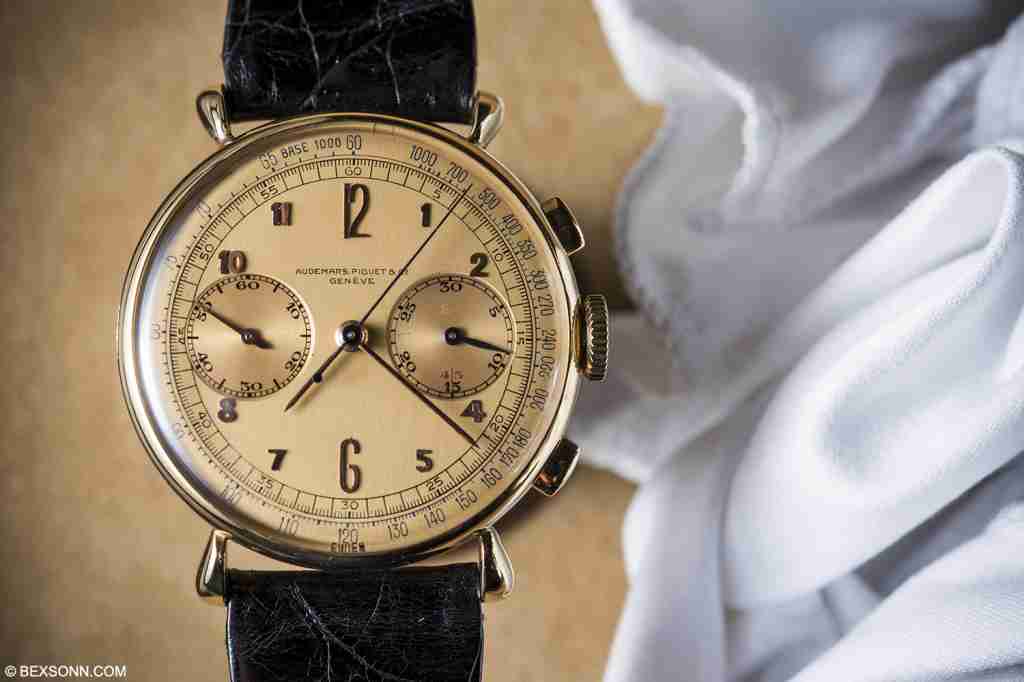 This vintage champagne dial AP chronograph is absolutely stunning in the metal. Measuring a classical 36mm (approx.), it features a two sub dial layout with a 30 minutes counter at 3 o’clock, though if you look carefully you’ll see in red an indication of 45 that will afford the wearer to record up to 45mins as well, this counter is indicated with a bright blue hand. On the opposite side at 9 o’clock is the continuous seconds dial for normal time indicated by a gold hand. Both sub dials feature circular graining. This particular chronograph features a 1000 base tachymeter outer timing scale, which is also in light blue matching the central chronograph seconds hand. The dial has very interesting handcrafted applied Arabic numerals, where 12 and 6 are elongated. The case features a, rather large for the case, winding crown, oval pushers, tear drop lugs and a snap-on case back. Ticking away inside this vintage AP chronograph is the Valjoux 13”’ VZA. When produced, Audemars Piguet only made 395 pieces of this particular chronograph.
This vintage champagne dial AP chronograph is absolutely stunning in the metal. Measuring a classical 36mm (approx.), it features a two sub dial layout with a 30 minutes counter at 3 o’clock, though if you look carefully you’ll see in red an indication of 45 that will afford the wearer to record up to 45mins as well, this counter is indicated with a bright blue hand. On the opposite side at 9 o’clock is the continuous seconds dial for normal time indicated by a gold hand. Both sub dials feature circular graining. This particular chronograph features a 1000 base tachymeter outer timing scale, which is also in light blue matching the central chronograph seconds hand. The dial has very interesting handcrafted applied Arabic numerals, where 12 and 6 are elongated. The case features a, rather large for the case, winding crown, oval pushers, tear drop lugs and a snap-on case back. Ticking away inside this vintage AP chronograph is the Valjoux 13”’ VZA. When produced, Audemars Piguet only made 395 pieces of this particular chronograph.
1939 18-CARAT YELLOW GOLD CHRONOGRAPH
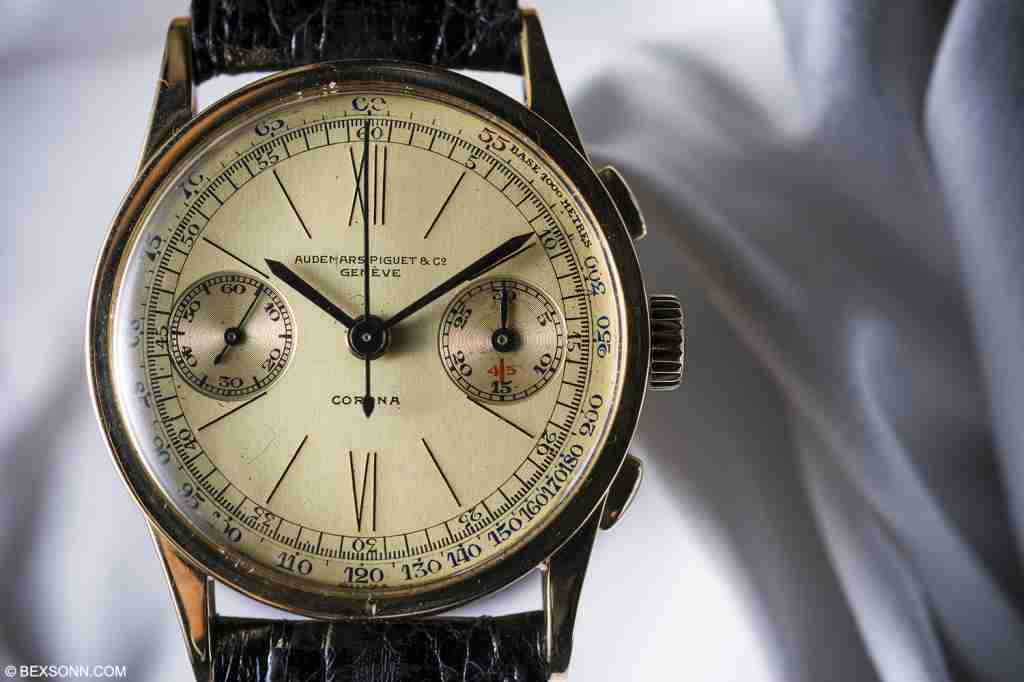 Another champagne dial chronograph from Marcus’ vintage AP collection; measuring a little bit smaller than the previous chronograph at approx. 34mm, though let’s not forget that this type of size for a gents watch back then was pretty run of the mill. Again it features a two sub dial layout with a 30 minutes counter at the 3 o’clock position, also with a 45 possible in red and a bright blue hand. On the opposite side at 9 o’clock is the continuous seconds dial for normal time indicated by a black hand and again both sub dials feature circular graining. This particular Audemars Piguet chronograph was co-signed ‘CORONA’ and retailed by Corona, Buenos Aires and sold in January 1940 for just 580 Swiss francs, though in 1940 this was a serious amount of money.
Another champagne dial chronograph from Marcus’ vintage AP collection; measuring a little bit smaller than the previous chronograph at approx. 34mm, though let’s not forget that this type of size for a gents watch back then was pretty run of the mill. Again it features a two sub dial layout with a 30 minutes counter at the 3 o’clock position, also with a 45 possible in red and a bright blue hand. On the opposite side at 9 o’clock is the continuous seconds dial for normal time indicated by a black hand and again both sub dials feature circular graining. This particular Audemars Piguet chronograph was co-signed ‘CORONA’ and retailed by Corona, Buenos Aires and sold in January 1940 for just 580 Swiss francs, though in 1940 this was a serious amount of money.
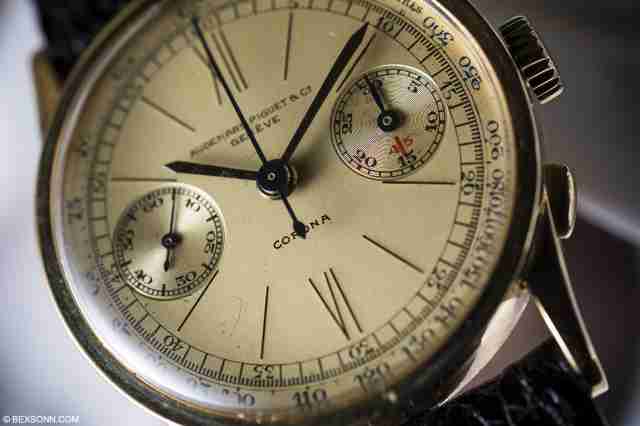 The dial features a 1000 base tachymeter scale that is also in blue with matching light blue central chronograph seconds hand. The champagne dial features black enamel extended batons with roman numerals at 12 and 6. The case features a large winding crown, oval pushers and downturned lugs. Inside this piece is the Valjoux 13”’ VZ – that features a gilt-finished highly jewelled lever movement and a Bi-metallic compensation balance. This is such a stunning chronograph that is very reminiscent of the timepieces like the ref. 533 and ref. 4072 that were produced by the likes of Patek Philippe and Vacheron Constantin and it would be nice to see watches like this again from AP.
The dial features a 1000 base tachymeter scale that is also in blue with matching light blue central chronograph seconds hand. The champagne dial features black enamel extended batons with roman numerals at 12 and 6. The case features a large winding crown, oval pushers and downturned lugs. Inside this piece is the Valjoux 13”’ VZ – that features a gilt-finished highly jewelled lever movement and a Bi-metallic compensation balance. This is such a stunning chronograph that is very reminiscent of the timepieces like the ref. 533 and ref. 4072 that were produced by the likes of Patek Philippe and Vacheron Constantin and it would be nice to see watches like this again from AP.
1941 18-CARAT YELLOW GOLD CHRONOGRAPH
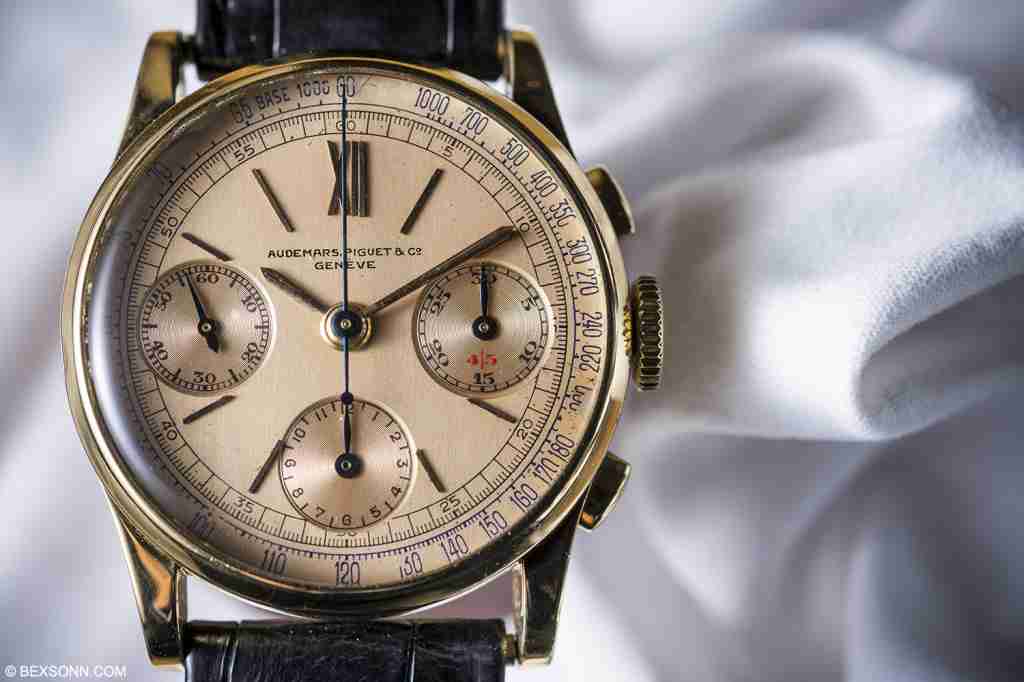 This 1941 18-carat yellow gold chronograph was one of the first Audemars Piguet to feature an hour counter. Again it has a beautiful champagne dial, with running seconds sub dial at 9 o’clock, chronograph minutes at 3 o’clock and the all important hour sub dial register at 9 o’clock. The sub dials feature circular graining and a bright blue hand, though the running seconds hand is differentiated with a change of shape compared to the minutes and hour registers. Like the others this chronograph also makes use of a base 1000 tachymeter scale, which is actually navy blue – though this may be quite hard to see in the pictures below and a bright blue central chronograph seconds hand, matching the sub dial indicators. The dial features gold applied batons with the only Roman numeral at 12 o’clock. The case measures a tad smaller than the others at approx. 33mm and features a large winding crown, oval pushers and downturned lugs. Inside this piece is the Valjoux 13”’ VZH.
This 1941 18-carat yellow gold chronograph was one of the first Audemars Piguet to feature an hour counter. Again it has a beautiful champagne dial, with running seconds sub dial at 9 o’clock, chronograph minutes at 3 o’clock and the all important hour sub dial register at 9 o’clock. The sub dials feature circular graining and a bright blue hand, though the running seconds hand is differentiated with a change of shape compared to the minutes and hour registers. Like the others this chronograph also makes use of a base 1000 tachymeter scale, which is actually navy blue – though this may be quite hard to see in the pictures below and a bright blue central chronograph seconds hand, matching the sub dial indicators. The dial features gold applied batons with the only Roman numeral at 12 o’clock. The case measures a tad smaller than the others at approx. 33mm and features a large winding crown, oval pushers and downturned lugs. Inside this piece is the Valjoux 13”’ VZH.
1946 18-CARAT YELLOW GOLD CHRONOGRAPH
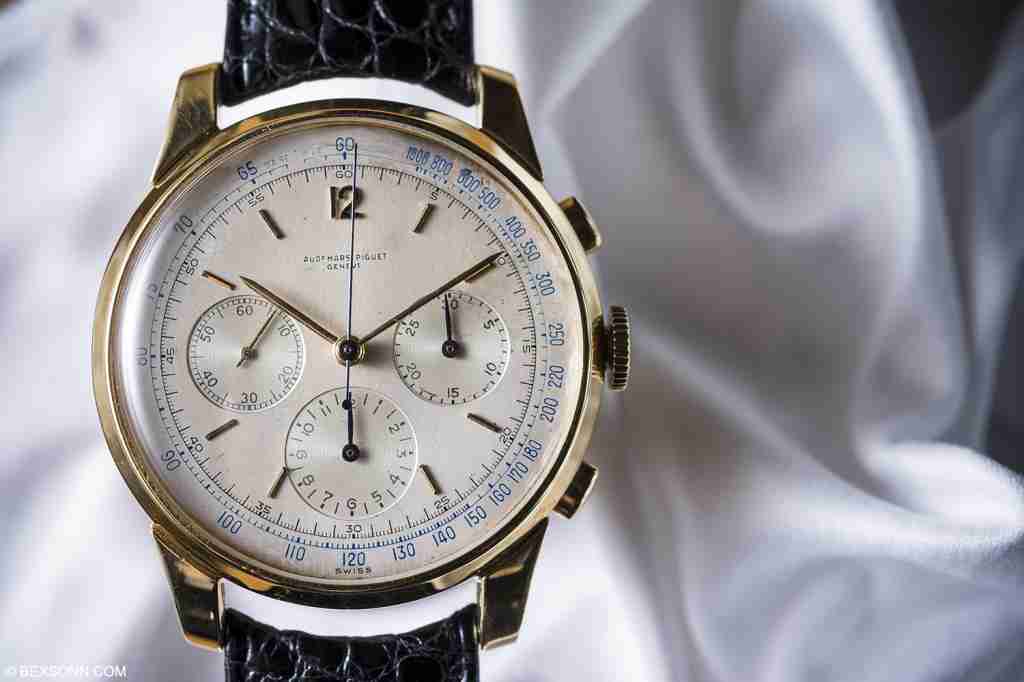 Then there is this, a 1946 18k yellow gold chronograph. This is the only known vintage Audemars Piguet chronograph in a 40mm case. Other chronograph models from this era had cases no larger than 36mm. Of the four chronographs we looked at from the collection this was one of the most striking and not just because of its size but also the silver dial that is in excellent condition. You’ll be able to see that the 1-mile base tachymeter scale has retained its vibrant blue colour, matching the central chronograph seconds hand. Like the previous vintage AP chronograph you’ve just seen this one also features three sub dials, with running seconds at 9 o’clock – indicated by a gold hand, 30 minute counter at 3 o’clock and a sub dial at 6 o’clock recording hours, both indicated by a blue hand matching the central seconds hand. The sub dials feature circular graining but if you look closely you’ll see that the 12-hour sub dial is slightly larger. The dial features applied gold batons with an Arabic numeral at 12 o’clock and a black five-minute division scale. The case features a large manual-winding crown and oval-shaped pushers. Behind that snap on case back, inside this absolute killer vintage AP chrono is the Valjoux 13”’ VZAH; as mentioned before this would indicate the movement has been modified by AP themselves.
Then there is this, a 1946 18k yellow gold chronograph. This is the only known vintage Audemars Piguet chronograph in a 40mm case. Other chronograph models from this era had cases no larger than 36mm. Of the four chronographs we looked at from the collection this was one of the most striking and not just because of its size but also the silver dial that is in excellent condition. You’ll be able to see that the 1-mile base tachymeter scale has retained its vibrant blue colour, matching the central chronograph seconds hand. Like the previous vintage AP chronograph you’ve just seen this one also features three sub dials, with running seconds at 9 o’clock – indicated by a gold hand, 30 minute counter at 3 o’clock and a sub dial at 6 o’clock recording hours, both indicated by a blue hand matching the central seconds hand. The sub dials feature circular graining but if you look closely you’ll see that the 12-hour sub dial is slightly larger. The dial features applied gold batons with an Arabic numeral at 12 o’clock and a black five-minute division scale. The case features a large manual-winding crown and oval-shaped pushers. Behind that snap on case back, inside this absolute killer vintage AP chrono is the Valjoux 13”’ VZAH; as mentioned before this would indicate the movement has been modified by AP themselves.
LEGACY?
These are some absolutely stunning vintage Audemars Piguet chronographs from the 1930’s and 40’s, and they all used probably one of the best chronograph movements from that era: the Valjoux 13”’ VZ. After looking at these watches I can now see why Marcus decided to amount this collection of vintage AP’s – of which you’ll see more of – but my only worry is that in decades to come will people actually remember these fine chronograph pieces that AP used to produce? From a personal standpoint I’d like to see timepieces like these produced again from the watch brand that is part of the ‘holy trinity’ of Patek Philippe and Vacheron Constantin that is Audemars Piguet.
SPECIAL THANKS
I would like to extend a special thank you to Alex Rose of Marcus Watches for his time and help while creating this article.
